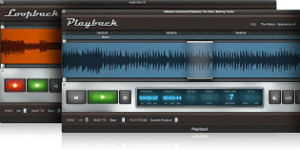Backing Track Player
A backing track player is usually necessary for anyone who would like to perform live on stage. Whether you are singing or playing an instrument, unless an entire band or orchestra is available your background music will come from a backing track player.
Generally speaking, the backing track player has changed in step with innovations in technology. For instance, during the 1960s most people requiring a backing track used the available reel-to-reel tape players. In the 1970s the most advanced technology available usually included cassette tapes. In the 1980s and 1990s live performances were either recorded digitally onto a midi or recorded to a CD.
Today, there are numerous ways to instantly create a backing track player, with possibly the iPod or MP3 player being the easiest and most convenient method of them all.
The MP3 (iPod) as Today’s Backing Track Player
Today, many performing artists, whether singers or musicians, are using MP3 players such as the iPod to provide backing tracks. MP3 players offer quite a few advantages over other kinds of technology:
- MP3 players can be loaded with high-quality sound tracks.
- They can hold hundreds, if not thousands of songs.
- Because of their small size, they can fit in your pocket.
- MP3 players are usually solid-state. As they have no moving parts, they are extremely reliable.
How to Use an MP3 Player for Backing Tracks
Using an MP3 player for backing tracks is quite simple. You can digitally record or copy tracks directly to your computer and then move them to your MP3 player. Using your line out (headphone jack), you can easily hook it to most PA systems. These systems can in turn connect to a speaker system at a show, no matter what the size of the venue. It should be noted that because many PA systems use


Comments - One Response to “Backing Track Player”
Sorry but comments are closed at this time.